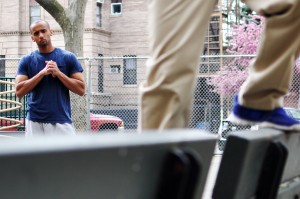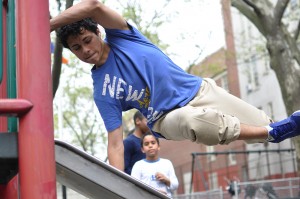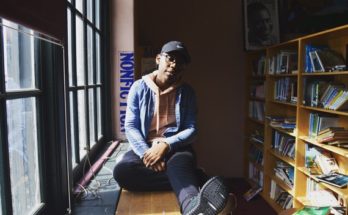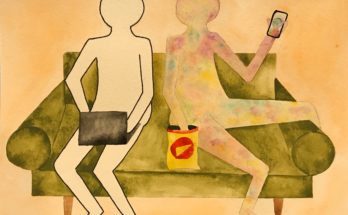Also read Fit Kids: All Work and No Play for the City’s Youngest Students, about the challenges city schools, especially the city’s elementary schools, face in providing the adequate time and space for adequate physical education programs.
At the end of a long school day, after two periods of math and two periods of English, middle school students at Williamsburg Collegiate Charter School have an extra hour for a non-academic class, which they get to pick each year. Artier students might opt for fashion design or photography, but a growing number of students pick parkour, a fitness discipline with elements of gymnastics.
In a city where most schools lack enough gymnasium space to house a quality physical education program, parkour offers a creative alternative. At Williamsburg Collegiate, students can get a rigorous workout in a regular classroom.
Basilio Montilla, 26, has been teaching parkour at the school for two years as part of the enrichment program. His students jump over school desks, balance walk on the edge of park benches, and choreograph their own stunt routines. “I tried my best to bring parkour into a school setting, “ he said, “in a very small space with barely any actual materials.”

About 15 boys in sixth through eighth grade take Montilla’s parkour class. Along with learning how to launch themselves over obstacles, they perform strength and conditioning exercises for their upper and lower bodies. “I tell my students,” he said. “The confidence they gain from a new move, apply that confidence somewhere else like a test they are going to take.”
Parkour started in France and came to this country in the last decade. Many of its practitioners, like Montilla, started training as teenagers, often in small groups, mimicking moves they saw on internet videos. Today, there are parkour academies where children and adults learn, but the discipline remains fairly young. There is no universally accepted parkour program curriculum and no governing body.
Montilla first developed as an instructor with his friends in the local parkour community, then at Chelsea Piers in Manhattan and Aviator Gym in Brooklyn. He was approached to develop the class at Williamsburg Collegiate after students requested parkour for an enrichment class.
Karen Barnett, who oversees the enrichment program, says she has not heard of injuries or complaints from parents because of parkour. “As long as all the materials are intact afterwards,” she said. “There are no complaints on the administrators’ end.”
A lot of Montilla’s students have been with him for two years now. He teaches them athletic movements, but he also teaches them the history of parkour and his interpretation of its philosophy, emphasizing having respect for the space they train in, facing fears and becoming role models in the parkour community.
Williamsburg Collegiate is part of the Uncommon Schools chain of charters that serve 3,900 students in 15 schools in the city. The school’s mission is to prepare low-income students for college through longer school days, mandatory tutoring and extra enrichment activities.

By Department of Education measures, the school is helping higher needs students catch up. Of the 1165 elementary and middle schools listed on the 2011-2012 Progress Report Results, Williamsburg Collegiate ranks 65th in points awarded based on closing the achievement gap, and 46th in overall performance score, with 61 percent of its students demonstrating proficiency in English and 95 percent demonstrating proficiency in math. Out of 350 students enrolled, 97 percent are African-American and Hispanic.
The enrichment program allows students to think creatively in more artistic disciplines, Barnett said. “When you look at kids who come from wealthier backgrounds,” she said, “their parents are paying for art classes or other extra-curricular activities that may not be offered at the school. So I think it’s extremely important for us to have a wide variety of enrichment classes so they can explore what their interests are.”




Hi
I am Virginia from Taiwan, a spinal cord injury person who play parkour.
I would like spared parkour spirit to Taiwan, to let people know it is not Extreme dangerous sport.
Can I translate your article and video to Chinese and spared it for let more Taiwan people understand what is parkour?
sincerely,
Virignia